On the fourth of November, the most important game in South America will be played to disclose the winner of the 2023 Copa Libertadores. The sixth-time Libertadores champions Boca Juniors will face the Brazilian side Fluminense at their own stadium, Estádio Jornalista Mário Filho, also known as Maracanã.
Jorge Almirón’s Boca qualified in first place in their group with 13 points (four wins, one draw and one defeat), where they scored nine times and conceded only twice. This club is characterised by never giving up, and this edition is proof of such resilience. In fact, in the knock-out stage, they didn’t win a single game, qualifying for the Libertadores’ final through three consecutive and successful penalty decisions.
On the other side, we have Fluminense, a historical side from Rio de Janeiro, commanded by Fernando Diniz, who, in parallel, coaches the Brazilian national team. They’ve also qualified as first in their group with 10 points (three wins, one draw and two defeats) with a 10-6 goal difference. Together with Palmeiras, Fluminense holds the best attack in the competition with 22 goals scored, reiterating the offensive process as their biggest strength.
In this tactical analysis, we’ll look at both teams’ identities on and off the ball, revealing their favourable and unfavourable approaches. Taking this into account, we’ll try to foresee some situations during the game where these teams will have the possibility to explore their opponent’s weaknesses.
We also leave you with some potential line-ups:
Boca Juniors: Romero; Advíncula; Figal; Valentini; Fabra; Medina; P. Fernández (C); E. Fernandez; Barco; Merentiel; Cavani
Fluminense: Fábio; Samuel; Nino (C); Melo; Marcelo; André; Martinelli; Ganso; Cano; Keno; Arias
Boca Juniors
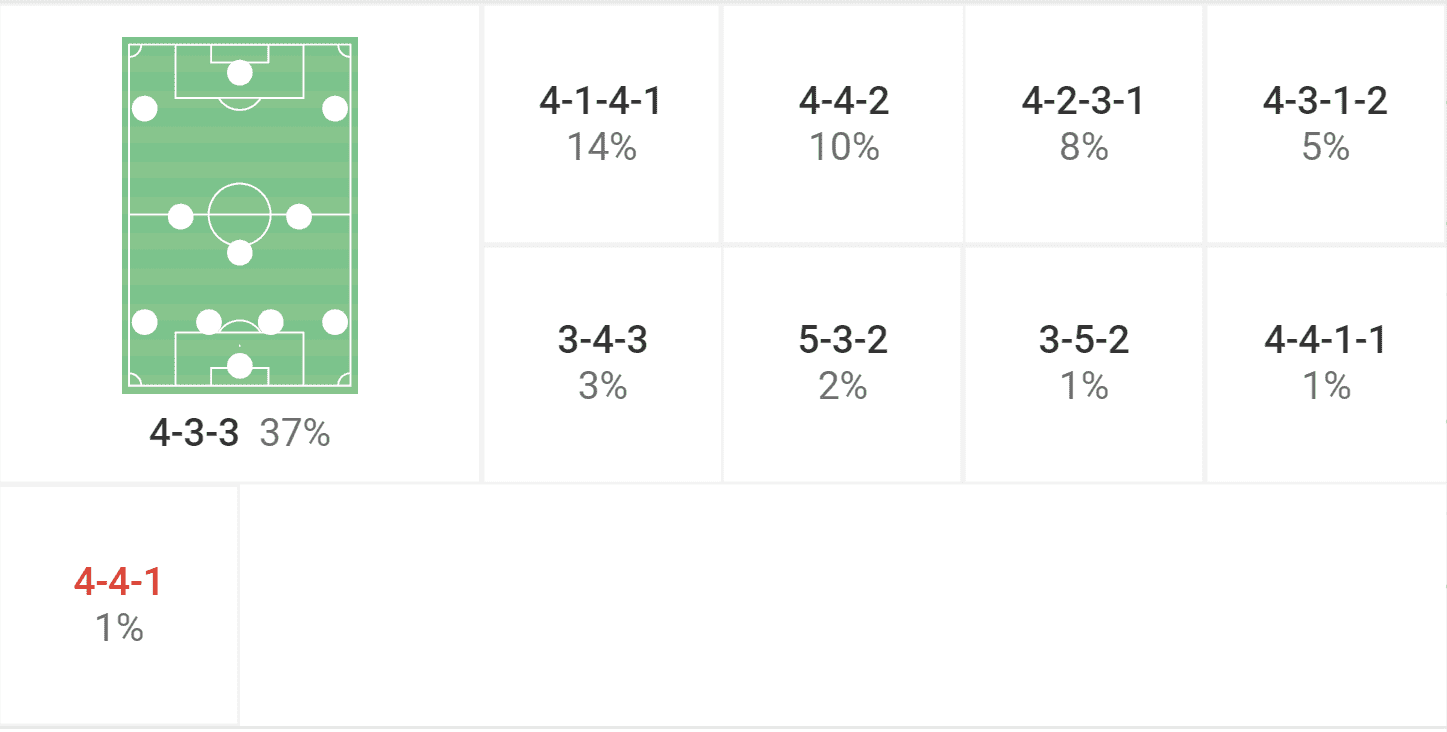
Although in some league games, the 4-3-3 is the most general and used game plan by Boca, we found out that they follow a 4-4-2 approach more recently. They are somewhat of a pragmatic team that adapts their game strategy to what they are going to face, where, for example, we commonly see them switching between a five or four-man backline. This’s only possible due to Almirón’s ability to take the best of his players and their tactical understanding of interpreting the game in different positions.
That said, they are a team that preferentially likes to build from the back through a short pass strategy. However, the direct game is also a good and viable option. They not only have Cavani and Merentiel to win aerial duels but also a range of aggressive and intense players to win the second ball.
Even if Boca plays with two centre-backs, as we expect, they continuously insist on building with three elements, not only because it allows the full-backs to project themselves on the field but, more importantly, to have numeric superiority in a low zone of the pitch. Pol Fernández is the player that normally integrates this line due to his capacity of reading and organising the game from the back.
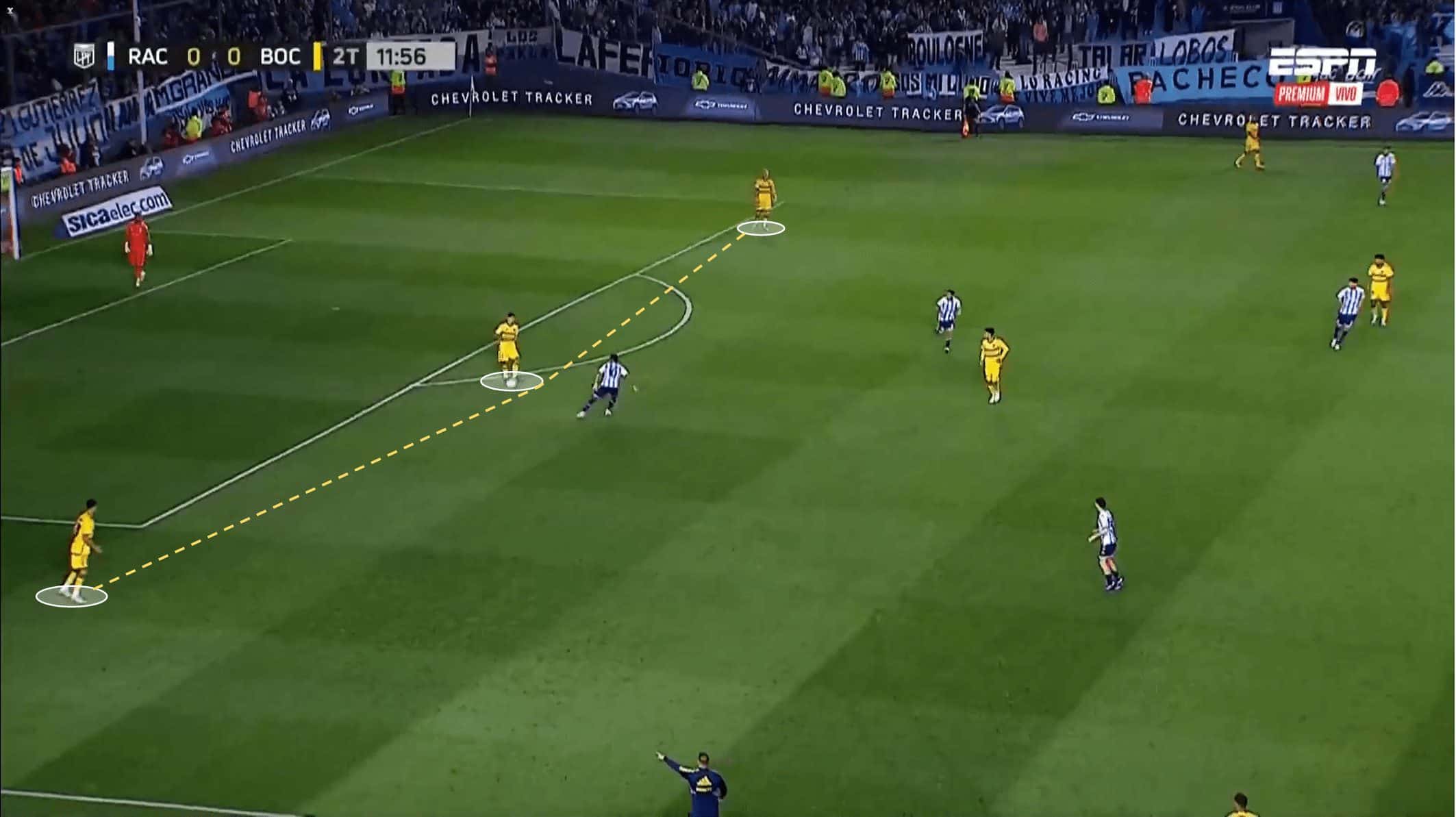
Even though Fernández contributes immensely to Boca’s first step while building up, he can also be somehow imprudent, especially by losing balls in compromising zones of the pitch. In our opinion, Diniz could have an extra eye on Fernández so that they hopefully increase their chances of winning the ball near the Xeneizes’ box.
Ahead of him normally plays Ezequiel Fernandez, who is particularly important in making the defence-attack connection. The wingers/side-midfielders are expected to be Cristian Medina and Valentín Barco, by the right and left, respectively. Yet, their positioning is quite unpredictable, especially by their ability to play inside. They vary their positioning according to the ball positioning; on the one hand, if the ball is on the wing, they quickly support the full-back, but if the ball is inside, they help inside, creating numeric superiority.
The front two, most likely composed by the Uruguayan duo Edinson Cavani and Miguel Merentiel, have complementary actions during the game. In contrast, if Cavani is seen deep, Merentiel seeks the space between the lines or vice versa.
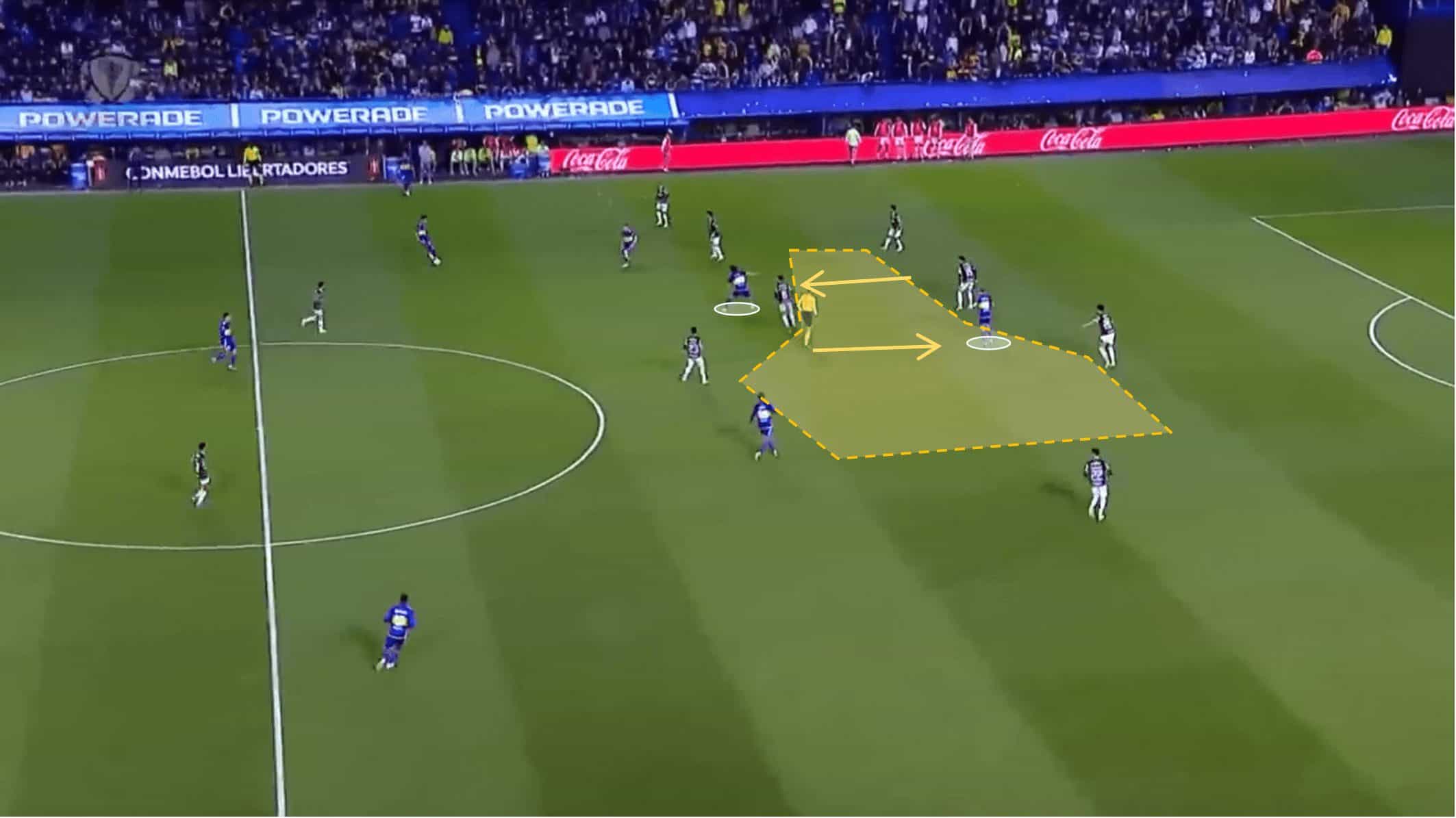
However, as we see it, Boca’s biggest strength is their attack through the flanks, not only due to the speed of Advíncula by the right but also due to the technical quality of Fabra and Barco. In addition, the two strikers also contribute to such a process because of their constant and dangerous presence in the box, where in a few touches, they are capable of balancing the nets.
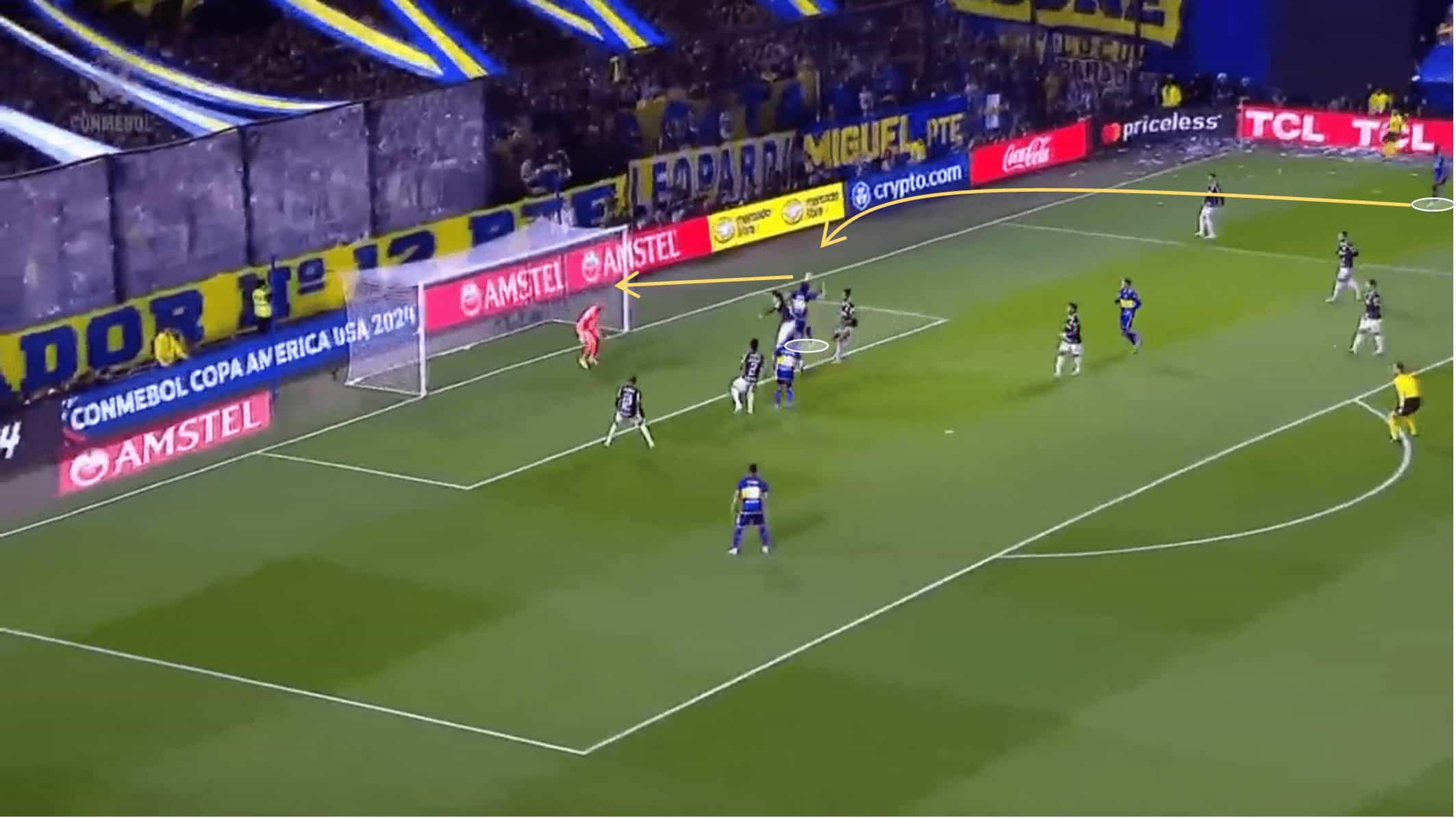
In terms of the defensive process, although on Saturday we foresee a four-man backline, we would be naive if we consider that they’ll defend in a 4-4-2 in all situations. Firstly, the most backtracked midfielder plays a surveillance role while tracking the striker, entering the defensive line if needed. Then, both Barco and Medina descend on the pitch if the winger is projected to impede inferiority by the flank.
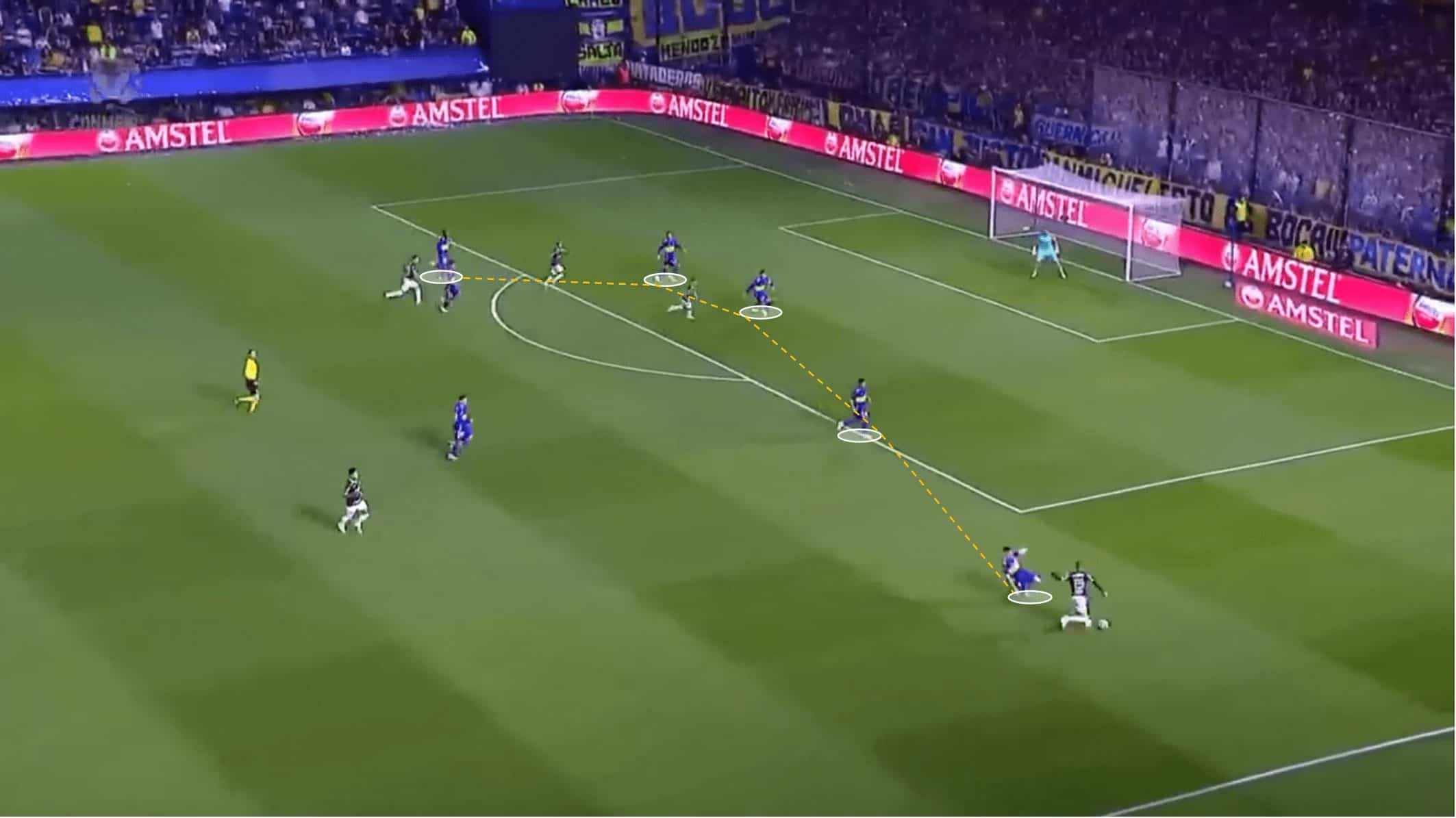
This is where things get trickier because to defend against the best attack of the competition, Boca needs their wingers to have almost an immaculate performance. Although Barco is typically an exemplar not only in organisation and transition, Medina shows some signs of neglect while defending, especially when the ball is lost. For example, we have the below frame, which led to a goal conceded.
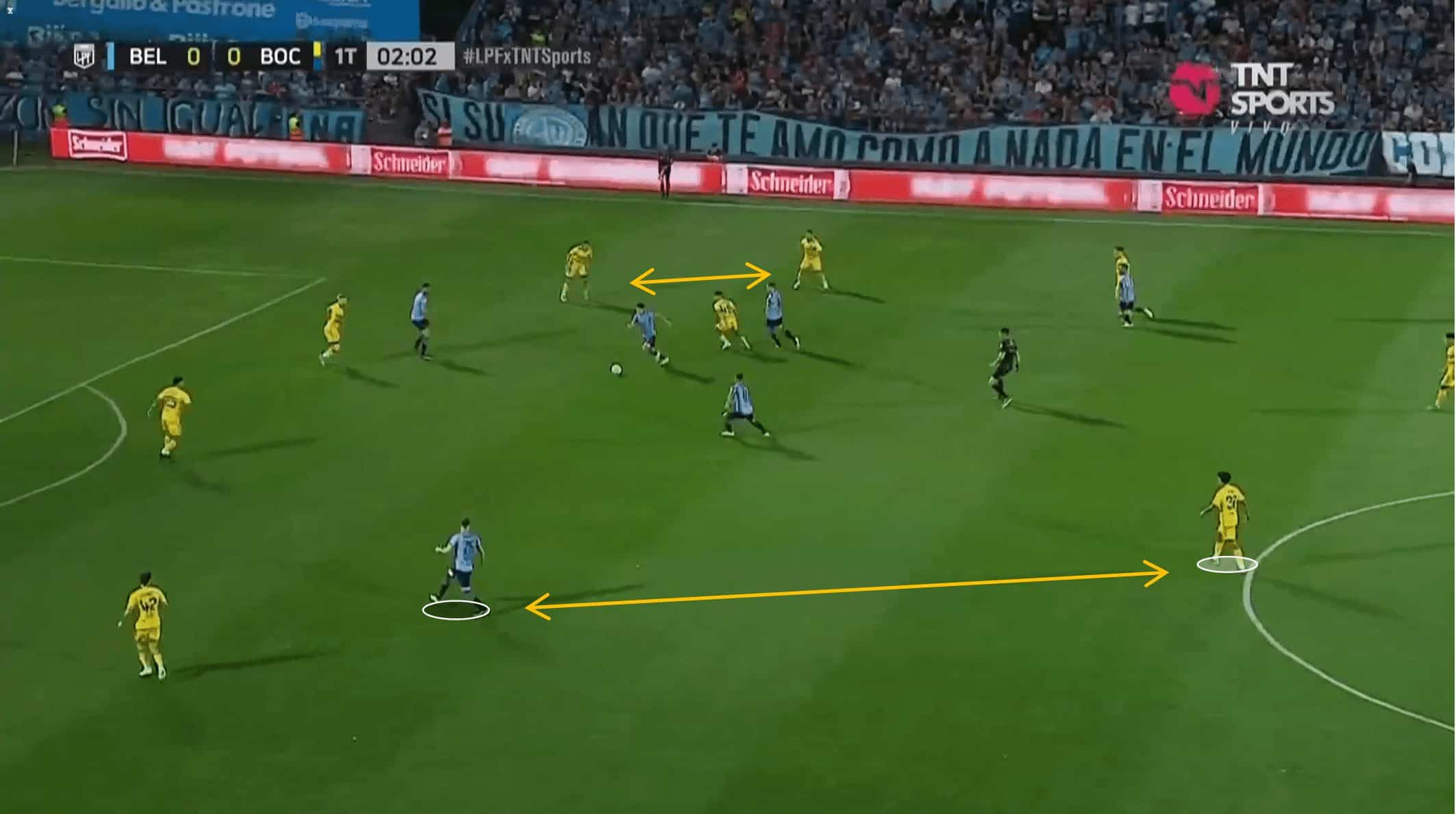
Fluminense has explosive and quick wingers like Kennedy and Keno, and in a 1v1 situation by the right flank, they can seriously hurt the opposition.
Concerning their pressing, they are generally a medium-high team that made an 8.15 PPDA (Passes Per Defensive Action) this season. They are usually competent in understanding when they should increase the block or descend and regroup. Since we’re talking about a final that will be played at the “home” of Flumiense, we expect them to initially give some room to the opposition and slowly increase their pressing line.
Fluminense
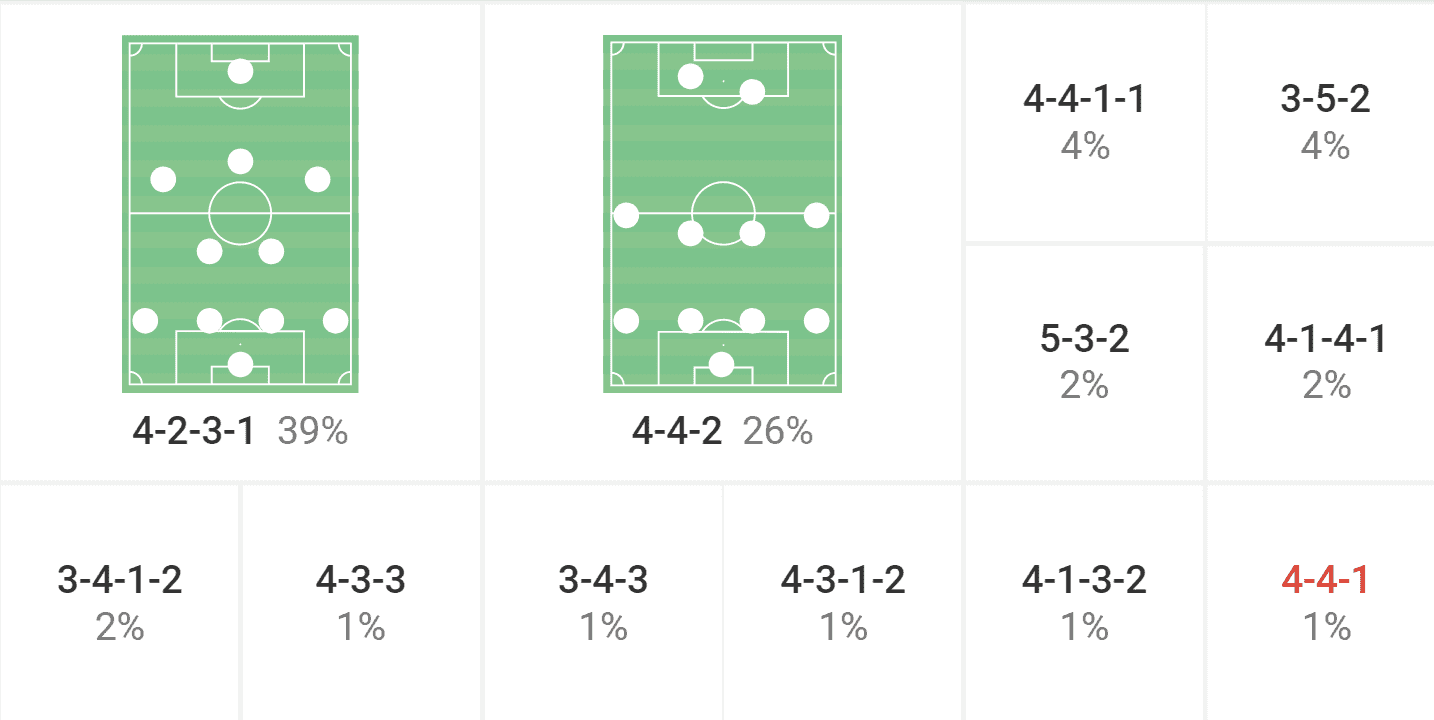
As shown below, Diniz’s group feels comfortable playing in a 4-2-3-1 as a primary tactical model, yet it suffers several changes during the game. They’re a team characterised by dominating the game with possession and with the philosophy of building from the back while gradually uprising their offensive block in the field.
For that, the three-man build-up is commonly used with André as a main intervenient when it descends between Nino and Felipe Melo. Top Premier League sides are sounding the 22-year-old Brazilian as a complete midfielder and one of the most valuable assets within the club, being fundamental for Fluminense’s offensive organisation.
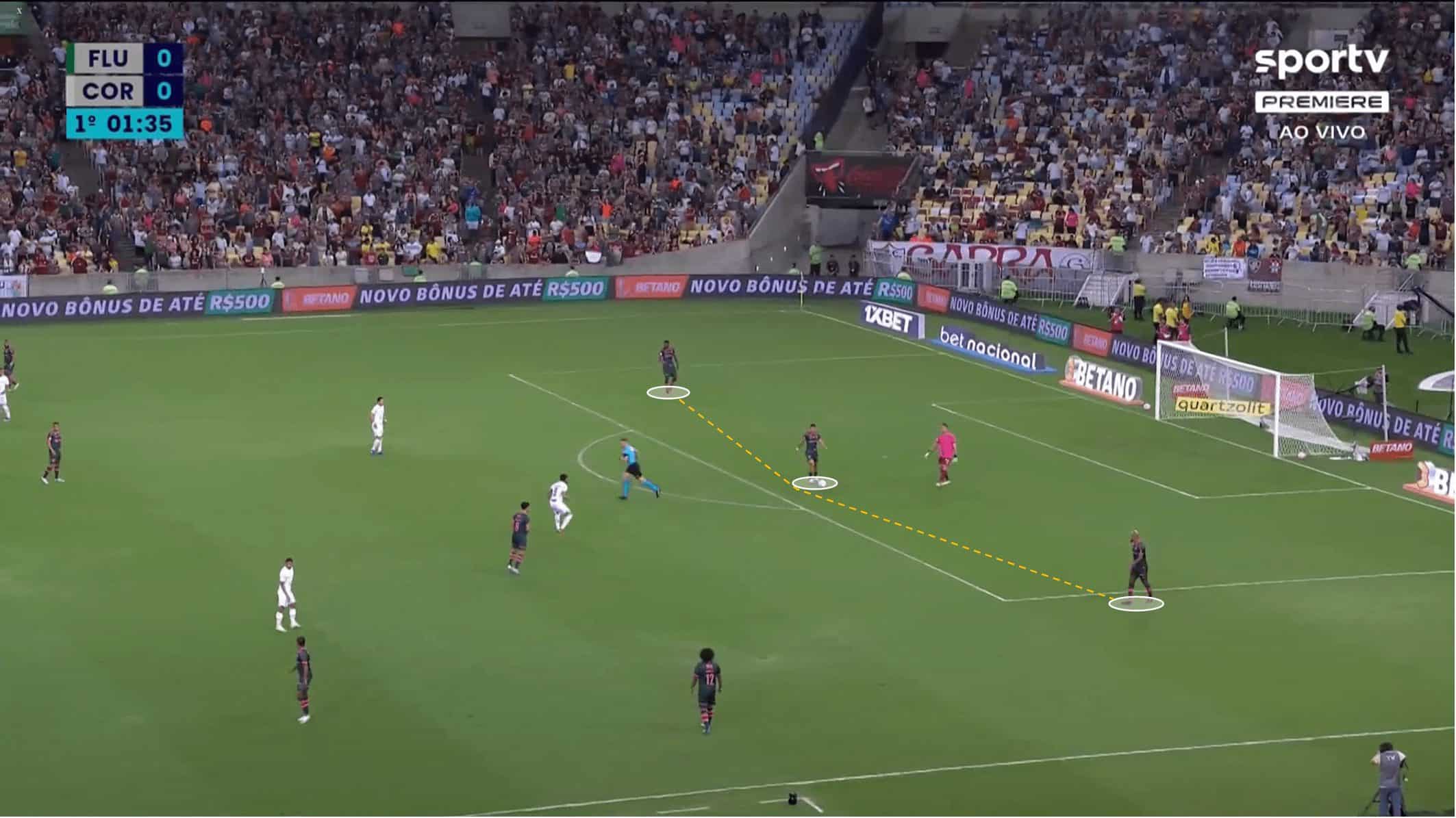
As we covered in a previous piece, Fluminense under Diniz has a different and kind of unusual approach while attacking, which consists of overloading a particular zone of the pitch, gaining a numeric advantage. With this, they increase the odds of success in that specific play.
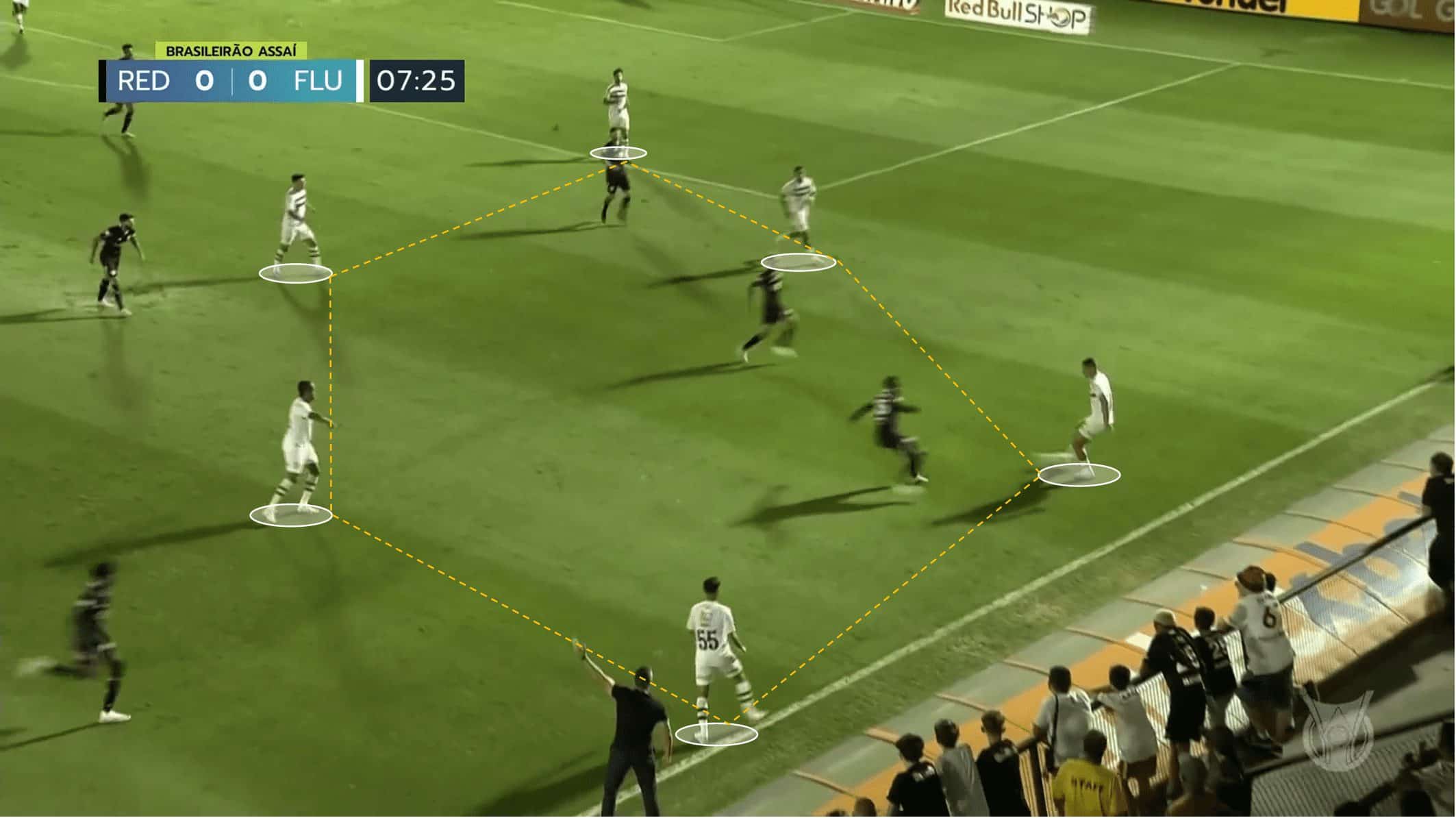
While they fix a large number of players in one flank, they leave one or two players open in the opposite corridor. With this, they can attract on one side by making successive short passes and finding an open teammate on the opposite wing, as visible below.
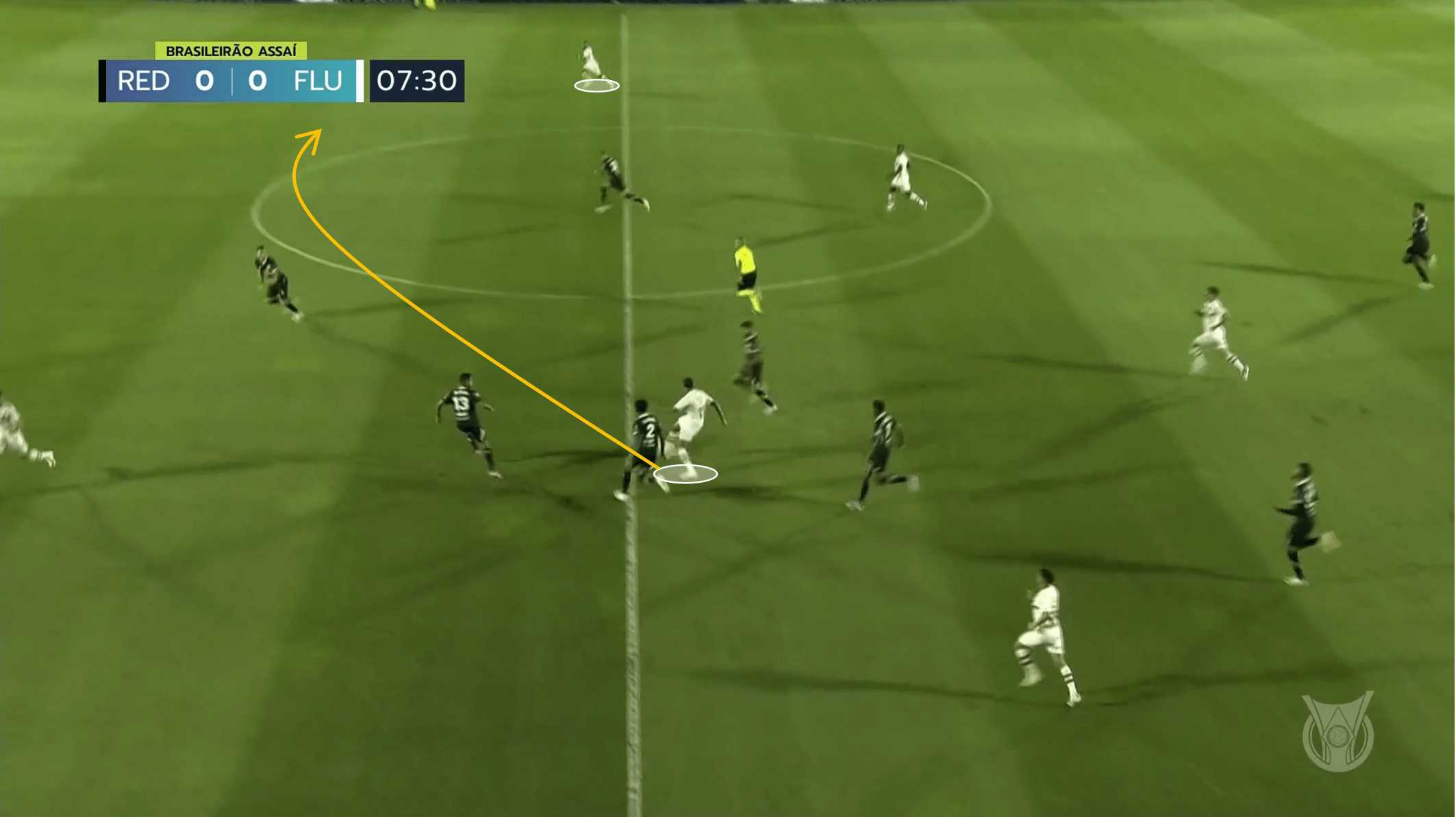
A fascinating and different approach from Diniz, who proved efficient in leading Fluminense to the 2023 Libertadores Final with the best attack. However, as we can mention further, this strategy can be counterproductive due to their exposure while playing like that.
The two experienced full-backs, Samuel Xavier and Marcelo (five times UEFA Champions League winner for Real Madrid) are developed both technically and tactically. As it goes, the head coach seems to give them some positional freedom. This does not mean they will occupy a more interior zone of the pitch whenever they want to, but when the conditions are met.
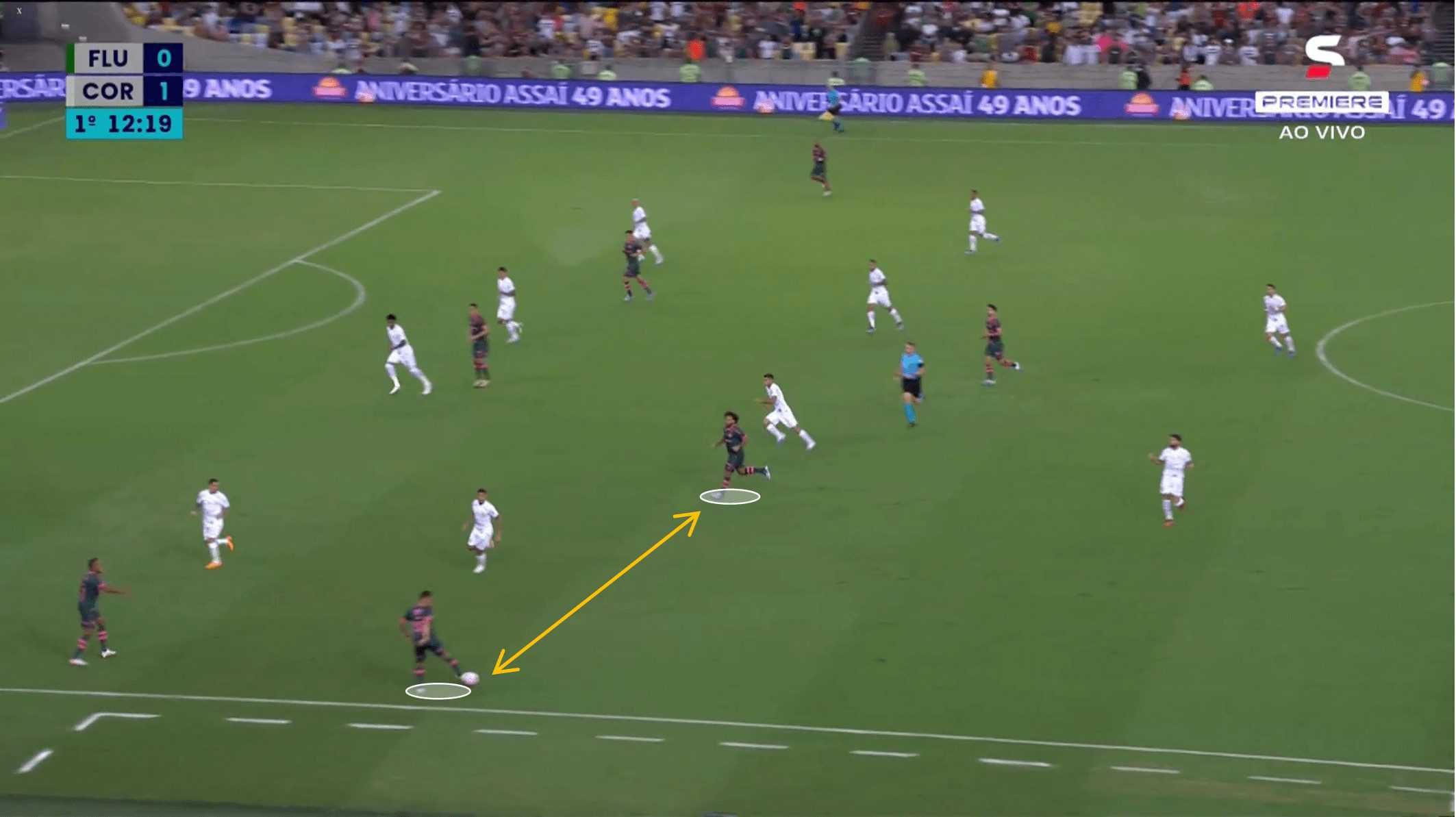
For example, as we can see above, Marcelo likes to breach from an inside zone, yet only if Keno is giving the full width. Moreover, we also think that this strategy is asymmetric insofar that Xavier is seen wide more often than Marcelo, not only by the player’s physical characteristics but, above all, the players they have playing on their side. We don’t think it is a coincidence that Marcelo is playing with a player who feels more comfortable on the flank (Keno). Samuel is supported by players with more propensity to explore more inside zones like Cano and Ganso.
In our analysis, we also found a pattern which is perceived when the ball carrier is the deeper and wider element on the pitch. When we’re at this stage, one of the attackers (including the offensive midfielder) immediately makes a diagonal into the touchline, giving an extra solution to the ball carrier.
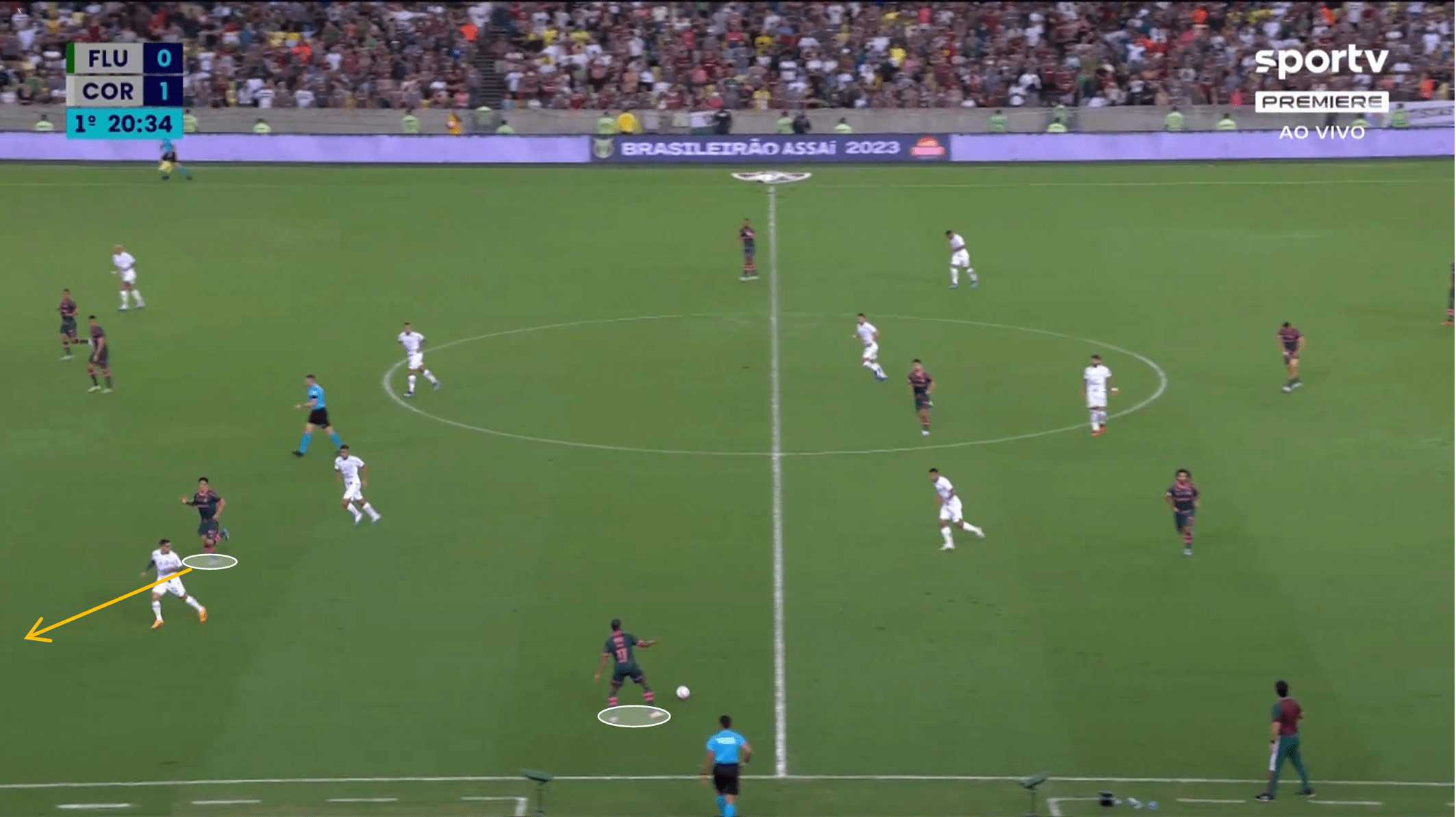
We couldn’t speak about Fluminense’s offensive tactics without mentioning the Argentinian legend Germán Cano, his team’s best goalscorer with 36 goals in 54 games. Moreover, the 35-year-old is also the Libertadores 2023 top-goal scorer with 12 goals in 11 games, an outstanding stat for a player of that age.
He’s a very pragmatic and opportunistic striker who, from a tiny space, has the quality and strength to execute a dangerous and powerful shot. In addition, he also likes to contribute by linking with his teammates in gaps left by the opposition; however, similar to Cavani, he’s focused on finding an intelligent way to appear free in the box.
Defensively, we expect to see a team that will shape their pressing into the opposition’s way of playing, where, in this case, we foresee a 4-3-3 since, as we saw, Boca usually builds up in a 3-man block.
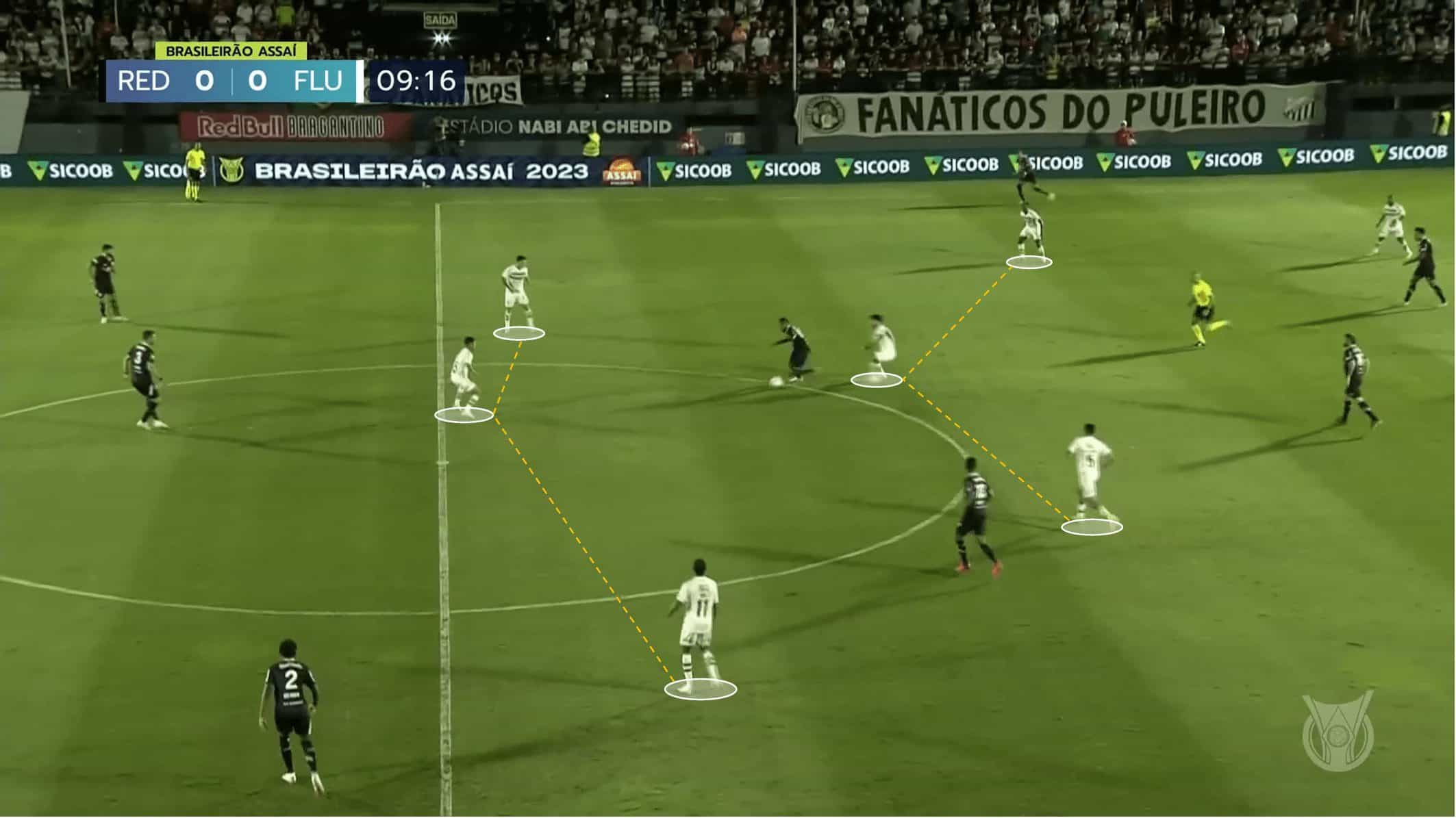
They have 7.33 PPDA, which indicates that Fluminense is a pretty intense team while pressing, and Boca should be prepared to perform in such conditions.
As we told you, the defensive transitions could be Fluminense’s most significant weakness this weekend, not only due to the space they give the opponent to explore in the counterattack but primarily due to the physical clash between the attackers and defenders.
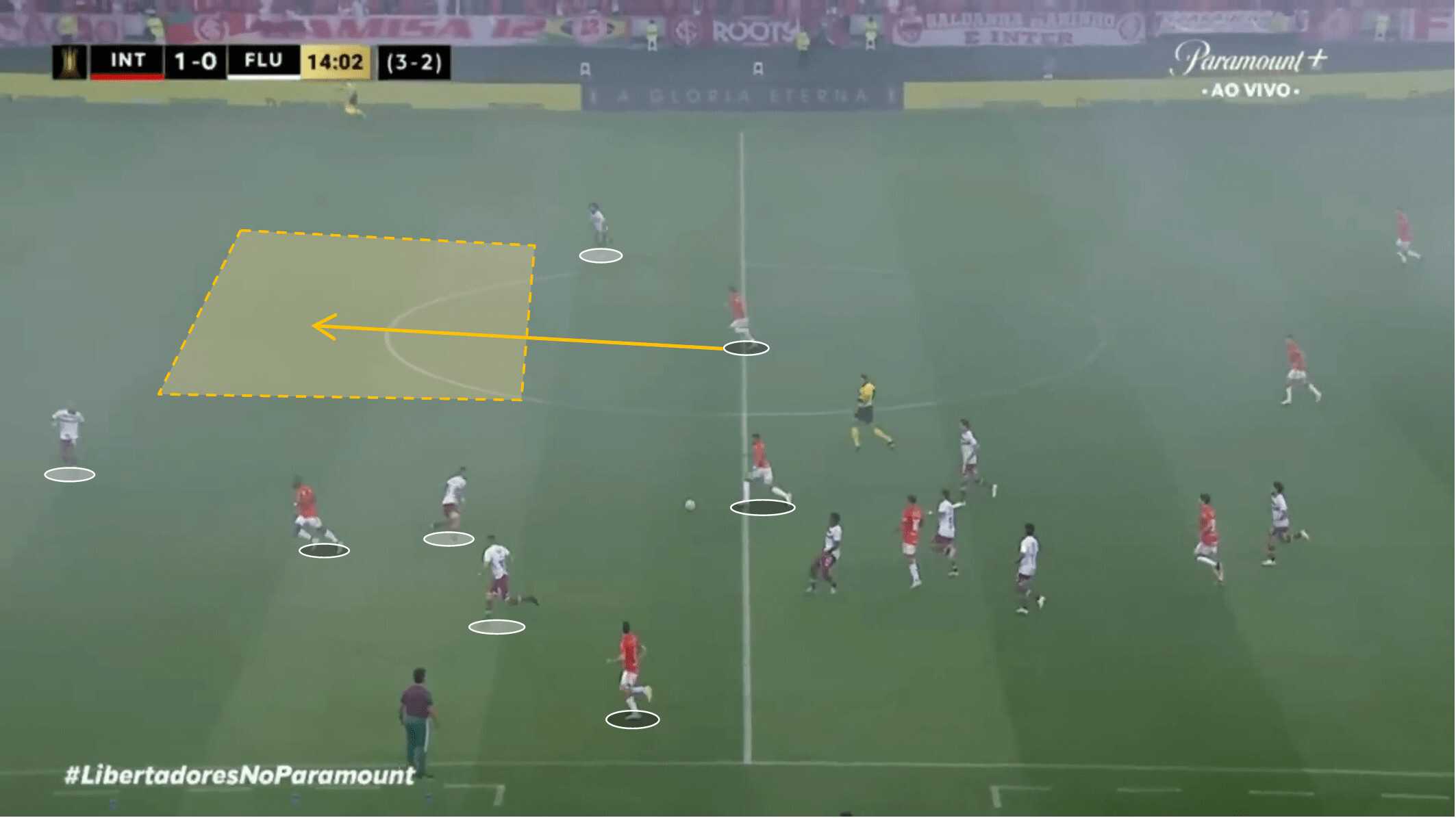
To prevent Barco’s, Merentiel’s and Advíncula’s incursions during the match, players such as Felipe Melo, Marcelo, and Nino should be vigilant since they’re not as fast as they are.
Conclusion
Firstly, we covered Boca’s offensive processes with P. Fernández as a central figure for all he represents in organising the game from the back. We also understood that although Boca often seeks to play in the middle, where, in our opinion, they are a threat is by the flanks with players like Barco, Medina and Fabra. In addition, they also privilege the corridors so that they can take advantage of Cavani and Merentiel through strong crosses into the box.
Although Boca is known for being an excellent team in defensive terms, we think that Fluminense can take advantage of some of Medina’s inattention.
In our view, Diniz’s Fluminese identity is based on gaining numeric inferiority in the different zones of the pitch while leaving open and deep element(s) on the opposite flank, waiting to progress. This is a very profitable but risky approach due to the propensity of counterattacks, especially when discussing a team like Boca that feels comfortable playing in transitions.
In sum, we think we’ll be a very balanced game, where, on the one hand, we have a team that is playing at home and who will give everything to bring their first Libertadores into the club. On the other, we have the second biggest winner in this competition whose experience of winning such trophies can have a decisive role in this final.






Comments